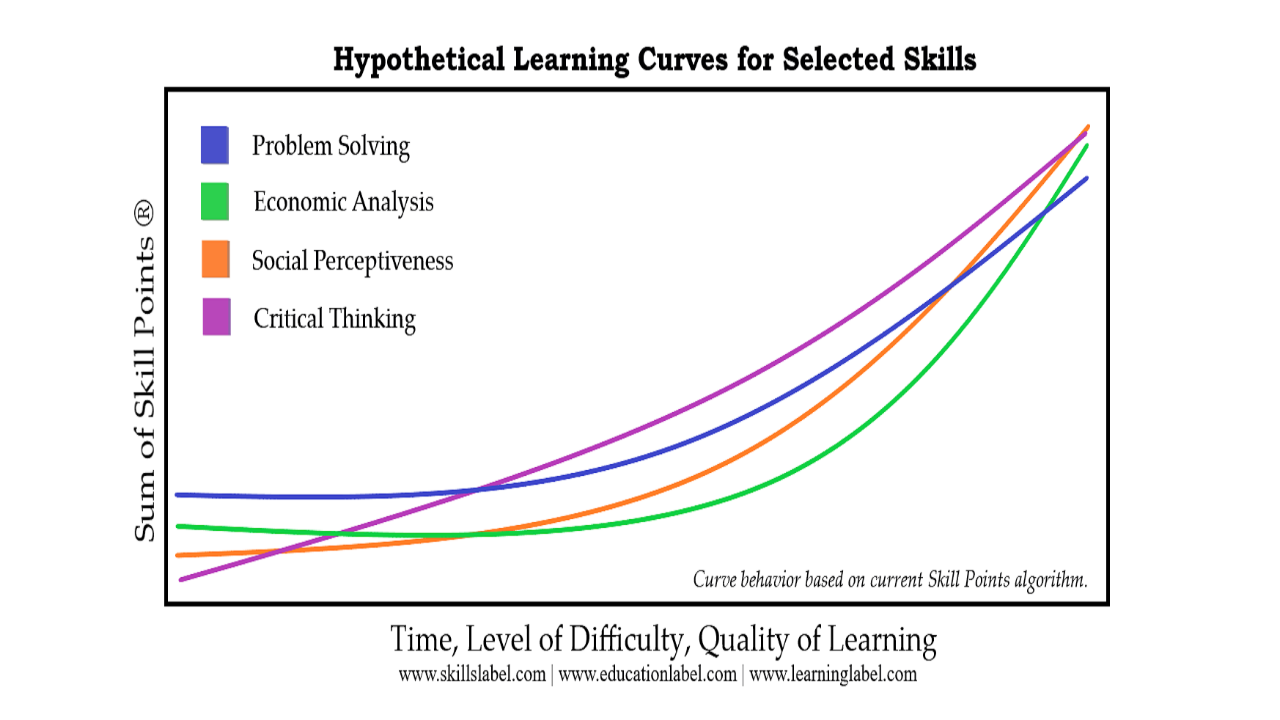With Skill Points there is so much perceived value in being able to quantify learning and job thresholds in skills, probably the biggest is being able to combine them together to create responsive pathways – use the same definitions (skills) and measurements (Skill Points). Why go back and forth with different interpretations, nomenclatures, and systems?
Skill Points was introduced early in the inception of the learning labels system (and is clearly stated in the patent application). The goal is to use Skill Points to quantify how much skill is applied in an experience, task, or activity. An algorithm calculates them as the labels get created. There are many factors with this learning measurement, some of them include the level of difficulty, intensity, and frequency skills are applied.
One way to take Skill Points to the next generation (2.0) is to add a coefficient (growth rate) for each skill (on a skill-by-skill basis). This would be a significant undertaking because the complexity and number of skills. To get started, here are some seed ideas:
Time longitude study. Track learning with a specific set of skills (methods and applications and standards) with a collection of users through time. The groups should represent different stages of learners (education, higher education, and professional development). Take periodic assessments. Aggregate the results. Construct coefficients based on the results.
Use current curriculum and credit hour system. Define current learning plans and curriculum in skills (methods and applications and standards) using the learning labels system. Use current credit hour system and other ways to measure progress. Construct coefficients based on time, skill, and achieving skills levels.
Use human learning starting from scratch. Use -pre, -during, and -post assessments to measure how a learner improves in learning skills in tasks and experiences. Aggregate the results: match skill to time, level of difficult, and type (quality) of the learning experiences.
Use machine learning / AI starting from scratch. Use -pre, -during, and -post assessments to measure how a system improves in learning skills in simulated tasks or experiences. Take the results: match skill to time, level of difficult, and type (quality) of the learning experiences.
These ideas are not mutually exclusive. The advantage of the first two are they could be started right away. For the first, start once the longitude study is designed. For the second, start mapping a curriculum or learning program - there are already apps to do this. The last two methods require a database of learning labels and the ‘human learning’ requires a healthy number of users in the system.
(For all of them) a good first step is to simply start creating learning labels for your resources.
The idea of numerical learning gains (Skill Points®) is a convincing feature of the learning labels technology. Building them through education, higher education, and a career connects these stages together. The results of new skill coefficients could be immediately applied in the learning labels application.
Much of this article appeared as a chapter in Learning Labels—A System to Manage and Track Skills: Map Learning in Skills. Map Jobs in Skills. Combine to Create Pathways. I thought the recent change of the patent application to an allowance stage cements the utility and value of system, where Skill Points play a crucial role. At this stage, my team is looking for contributors to build Skill Points 2.0.
